Two point sources separated by 2.0 m are radiating in phase with λ=0.50m. A detector moves in a circular path around the two sources in a plane containing them. How many maxima are detected?
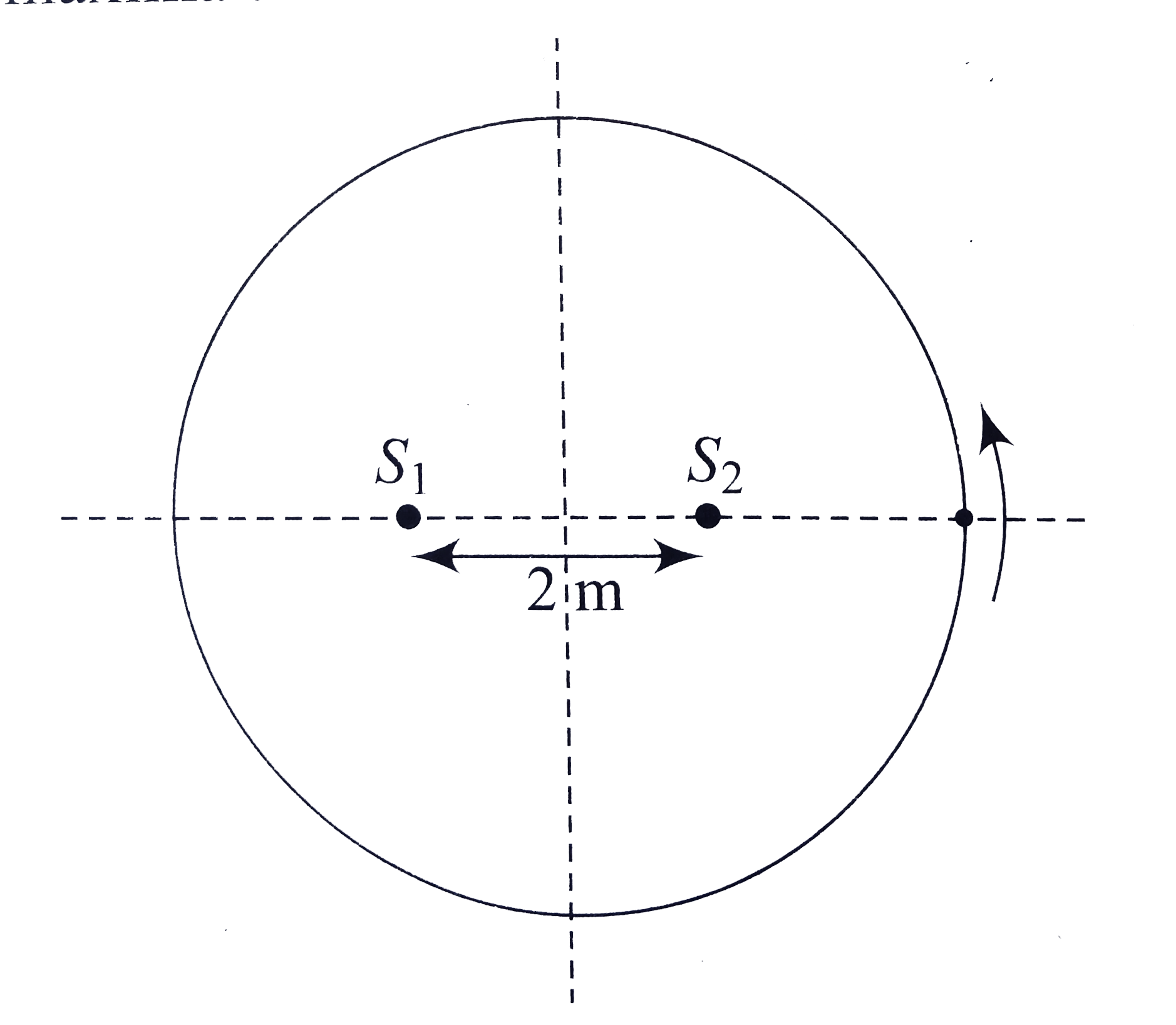
16
20
24
32
The correct Answer is:a
Condition for maxima is
dsinθ=nλ
sinθ=nλd=n(0.502.0)=0.25n
A sinθ lies between -1 and 1, so we wish to find all values of n for which
|0.25n|≤1
These value are -4, -3, -2, -1, 0, +1, +2, +3, +4. For each of these, there are two different values of theta except for -4 and +4 A single value of θ,−90∘ and +90∘, is associated with n=−4 and n=+4, respectively. Thus, there are 16 different angles in all and therefore 16 maxima.
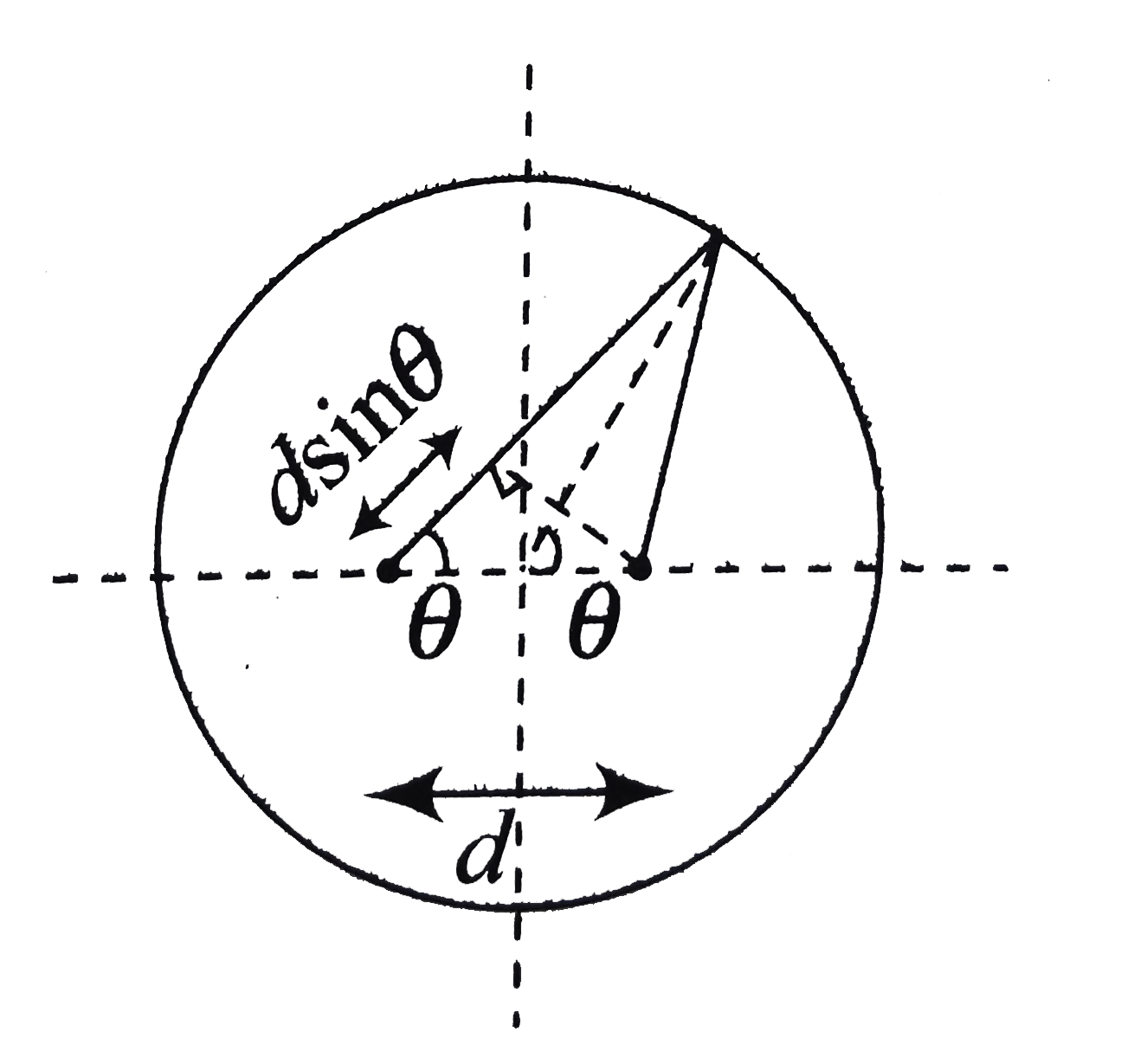
Topper's Solved these Questions
- WAVE OPTICSBOOK - CENGAGE PHYSICSCHAPTER - WAVE OPTICSEXERCISE - Multiple Correct
8 Videos
- WAVE OPTICSBOOK - CENGAGE PHYSICSCHAPTER - WAVE OPTICSEXERCISE - Assertion- Reasoning
13 Videos
- WAVE OPTICSBOOK - CENGAGE PHYSICSCHAPTER - WAVE OPTICSEXERCISE - Subjective
11 Videos
- THERMODYNAMICSBOOK - CENGAGE PHYSICSCHAPTER - THERMODYNAMICSEXERCISE - QUESTION BANK
34 Videos
- WAVESBOOK - CENGAGE PHYSICSCHAPTER - WAVESEXERCISE - QUESTION BANK
38 Videos
Similar Questions
Two coherent radio-frequency point sources separated by 2.0m are radiating in phase with λ=0.50m. A detector moves in a circuit of large radius around the two sources in a plane containing them as shown in figure. Find (a) the angular position of interference maxima for 0≤θ≤90∘ and (b) number of maximum in the range (−π2)≤θ≤π2 and in one complete rotation.
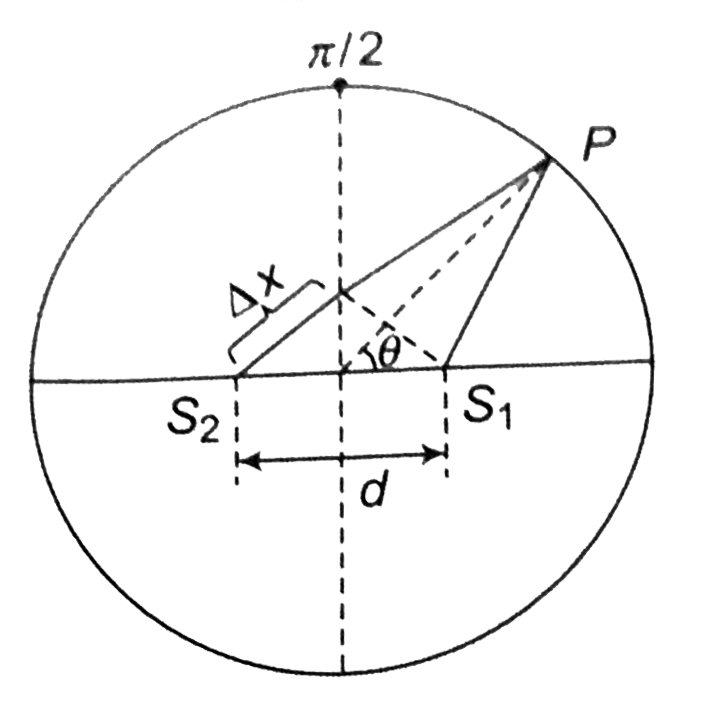
View Solution
In Figure, two radio- frequency point sources S1 and S2 separated by distance d = 1.8 m, are radiating in phase with λ=0.50m. A detector moves in a large circular path around the two sources in a plane contain- ing them. How many (a) maxima and (b) minima does it detect?
View Solution
Knowledge Check
Two radio frequency sources S1 and S2, separated by distance 2.5 m emitting in phase waves of wavelength 1m. A detector moves in a large circular path around the two sources in a plane containing them. The number of maxima that will be detected by it over the complete circular path. are
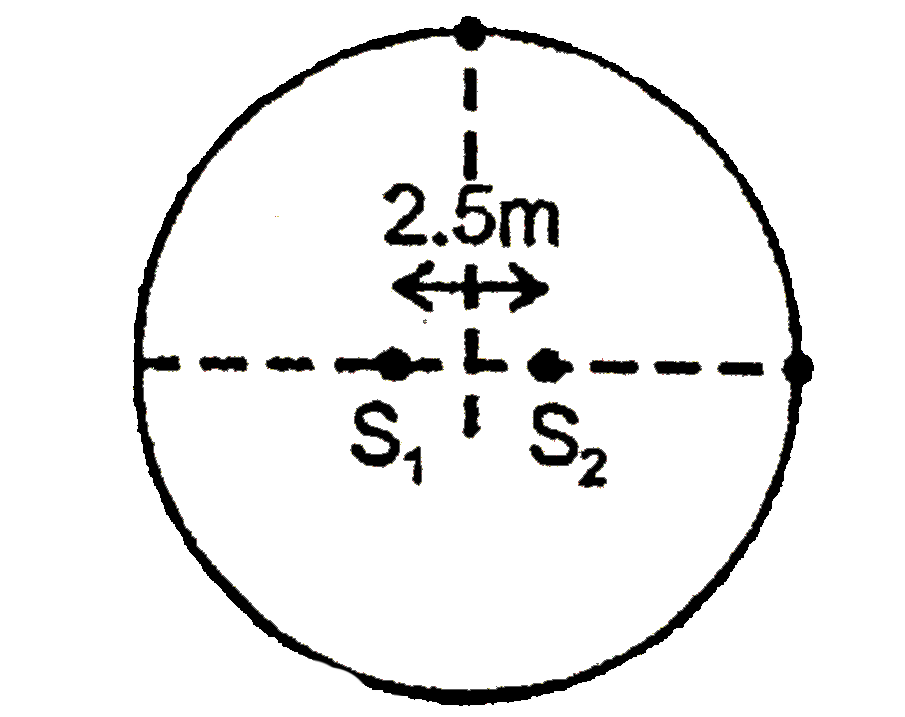 A16B12C10D8
A16B12C10D8Two coherent sources separated by distance d are radiating in phase having wavelength λ. A detector moves in a big circle around the two sources in the plane of the two sources. The angular position of n=4 interference maxima is given as
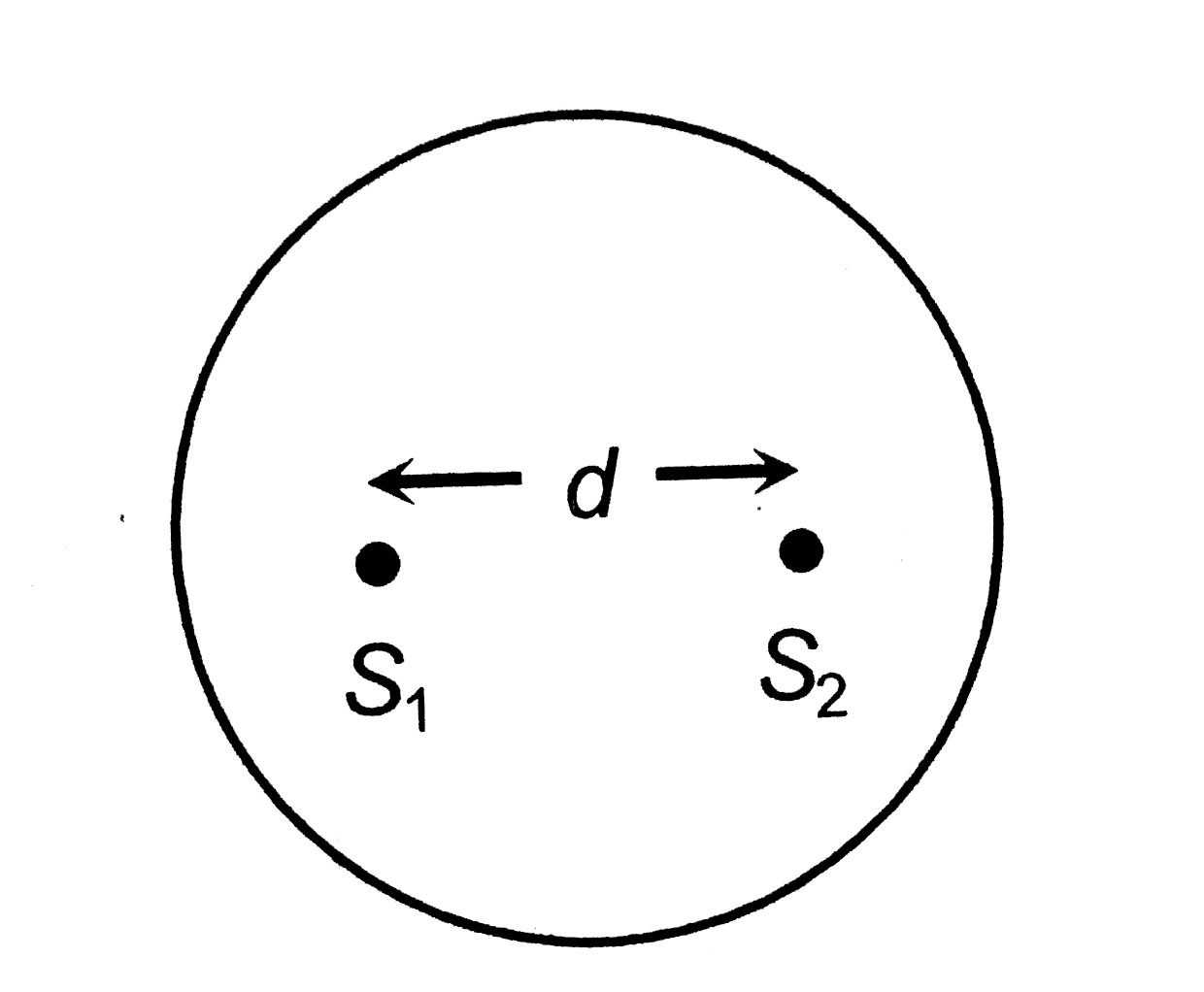 Asin−1(nλ)dBcos−1(4λd)Ctan−1(d)4λDcos−1(λ)4d
Asin−1(nλ)dBcos−1(4λd)Ctan−1(d)4λDcos−1(λ)4d_E01_036_Q01.png)
Two point source separated by d=5μm emit light of wavelength λ=2μm in phase A cicular wire of radius 20μm is placed aournd the source as shown in figure.APoints A and B are dark and points C and D are bright.BPoint A and B are bright and point C and D are darkCPoint A and C are dark and points B and D are bright.DPoints A and C are bright and points B and D are dark.
Two coherent radio point sources that are separated by 2.0 m are radiating in phase with a wavelength of 0.25m. If a detector moves in a large circle around their mid-point. At how many points will the detector show a maximum signal?
View SolutionTwo point source separated by d=5μm emit light of wavelength λ=2μm in phase. A circular wire of radius 20μm is placed around the source as shown in figure. Which point are dark and bright.
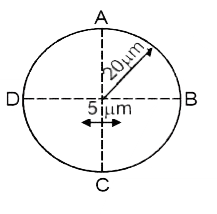
View SolutionAn inteference is observed due to two coherent sources A and B separated by a distance 4λ along Y-axis, where λ is the wavelength of light. A detector 'D' is moved alog the positive X-axis. Find the totla number of maxima observe on the X-axis excluding the points x=0 and x=∞ ?

View SolutionTwo monochromatic (wavelength = a/5) and coherent sources of electromagnetic waves are placed on the x-axis at the points (2a,0) and (-a,0). A detector moves in a circle of radius R(gtgt2a) whose centre is at the origin. The number of maxima detected during one circular revolution by the detector are
View SolutionTwo monochromatic (wavelength =a/5) and coherent sources of electromagnetic waves are placed on the x-axis at the point (2a,0) and (−a,0). A detector moves in a circle of radius R(>>2a) whose centre is at te origin. The number of maximas detected during one circular revolution by the deterctor are -
View Solution
